I saw examples as well of older adults, who had had a stroke, taking part in projects, experiencing improvements in their movements that they had not been having through other kinds of therapies. This got me really interested in why this might be happening. I went and worked in the NHS afterwards, managing clinical innovations programs, and the arts were consistently the ones that captured people's imagination the most and were having such clear benefits. I left the NHS to go and pursue science, and I spent years exploring what the different mechanisms of this were, why it was that arts could have these remarkable effects on us.
Engaging in the arts for health
Professor of Psychobiology & Epidemiology
- Arts engagement measurably improves health, lowering depression, anxiety and stress and easing pain, including around surgery.
- Active ingredients like creativity, social connection and multisensory stimulation trigger psychological, biological and social mechanisms. They activate reward pathways, help regulate emotions and let the brain rehearse challenges.
- Regular participation in art activities builds neuroplasticity and cognitive reserve, supporting language development in infancy, recovery after brain injury and a lower risk of dementia later in life.
- For neurological conditions, music and dance improve gait and balance after a stroke, maintain motor function in Parkinson's and unlock memories in Alzheimer's. Arts-enriched care reduces agitation and medication use.
Art’s effect on us
While I was a university student at Oxford, I got involved in an amazing program that was delivering arts projects in hospitals to support children who were having treatments. I saw firsthand the examples of how beneficial this was. Children were listening to music while they were having painful procedures and actually not needing morphine. There were young people who were really isolated and lonely, but then they were having arts experiences that were helping them to connect with other people in the hospital so that they did not feel any stigma or isolation about what they were going through.
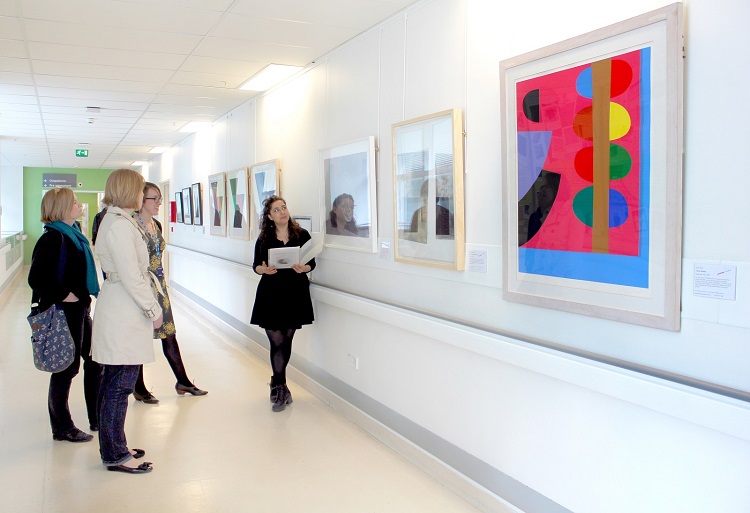
Paintings in hospitals bring creativity to healthcare spaces © PiH
Arts, health and healing
The arts encompass a broad range of human practices that have been present in every human culture since at least Paleolithic times.
 Aboriginal painting at Jabiru Dreaming, Australia © Commonwealth Bank via Wikimedia
Aboriginal painting at Jabiru Dreaming, Australia © Commonwealth Bank via Wikimedia
They primarily involve creativity, imagination, appreciation for their beauty and aesthetics and some kind of emotional expression. Although the styles and genres can vary in different cultures, we often see certain common art forms, things like crafts, visual arts, performing arts and music. When we think and look back at history, we actually see that the arts have been embedded within health and healing right from their first involvement, their first usage by humans. Across every single medical tradition, we find discussion and examples of the arts being used as aspects of medical care. Naturally, throughout this, there are plenty of examples that are myth, magic and superstition, but there are also some really interesting examples where the arts were being used that now we recognize scientifically might well have had a health value. This is by no means a new idea, but it is much more of a new scientific approach to actually understanding and quantifying how, what and why these effects occur.
Active ingredients of arts engagement
One of the important things is to understand why and how it is that the arts affect our health. If we think about drugs as an example, if you have a headache and you take ibuprofen, then we know that the reason ibuprofen helps to reduce your headache is because it has an active ingredient called propionic acid. That active ingredient is what is responsible for those effects. We can apply this approach as a metaphor to how we think about the arts. When we engage in the arts, there are many different active ingredients that we are exposed to. Some of these are quite generic and beneficial to health. Things like physical activity, social interaction or cognitive stimulation. Other ingredients are more specific or particularly strongly expressed in the arts — things like creativity, imagination and multisensory stimulation.
 © Andrea Huls Pareja via Unsplash
© Andrea Huls Pareja via Unsplash
There are also other ingredients that can be around the social context and the environmental context: where we are engaging in the arts, whether we are going to be outside getting nature exposure, in beautiful buildings or in environments that might feel like safe or comforting spaces. These various ingredients then affect our health by activating different mechanisms of action. If we think back on our ibuprofen example, propionic acid leads to the release of prostaglandins in the body that trigger reductions in inflammation.
If we apply this to the arts, when we engage, the active ingredients activate various psychological, biological, social and behavioral processes that then lead to these changes in health outcomes. We can think about this if we are considering many of the diverse effects that the arts have on our health and well-being. If we think about mental health, for example, dozens of meta-analyses now show that when people engage in the arts, they experience reductions in depressive symptoms, anxiety and stress. We see this not only in people who already have mental illnesses but also in people with severe mental illnesses, as well as people who might not officially have anxiety or depression but might still be experiencing low mood, for example, day to day.
The brain and emotions
Mechanistically, the reason that this occurs is that when we engage in the arts, it activates pleasure regions within the brain, activates our dopaminergic reward system, which leads to the release of dopamine, a pleasure hormone. It also, when we engage in the arts, gives us opportunities to indulge in negativity. If we are engaging with sad artworks, for example, or things that are scary, this might, on the surface of it, feel a little bit strange that this might still help us to feel happier and better. Actually, we know that this is because through engaging in the arts, to have these more negative emotional experiences, it gives our brains a chance to experience other scenarios, to start to imagine how we might respond to things in real life. It is a concept called predictive coding, and it actually helps our brains to learn and prepare for challenging circumstances we then might face outside of the arts. When we engage in the arts, it also helps us to regulate our emotions. Sometimes this is because we use the arts to avoid things that might be giving us stress or worries, for example, giving us a chance to detach from those things, distract us from them. Other times, we use the arts to directly approach those problems. Sometimes when we are engaging in the arts, we are venting negative emotions, for example, or we are using the arts experience as a chance to reappraise, to think about things that might be bothering us.
 © Barbara Froes via Unsplash
© Barbara Froes via Unsplash
The arts also help us to meet psychological needs that we have. They can give us a chance to feel in control of our lives, even in just that art experience. That sense of brief control can help us to feel more in control of other aspects of our lives. They can give us a chance to feel mastery, that we have skills in something. They can give us a chance to experience meaning or feel a sense of purpose day to day. The arts also help us to develop a sense of self-identity. When we engage in the arts, we are not somebody who has a health condition; we can be an artist, a dancer, a musician. These identities are really important to our well-being, because they provide us with a kind of psychological resilience, a buffer, so that even if things in life threaten one part of our identity, we have other identities to fall back on that can help to make us feel more secure.
Preventing mental distress
These are all effects that can happen if we are already experiencing symptoms that are causing us mental distress. Actually, engaging in the arts can also be preventative.
 © Cluster Munition Coalition via Wikimedia
© Cluster Munition Coalition via Wikimedia
My team and I have undertaken vast amounts of epidemiological research, which is where we use data from very large scale cohort studies that have tracked thousands of people over years or decades. We consistently find that people who are engaged more regularly in arts activities over time have lower odds of developing mental health problems. Naturally, you could ask if the people who do the art are already different. Are they healthier, wealthier? Are they engaged in other behaviors that are beneficial? We use really sophisticated statistical models to tease this apart, and what we find is that this relationship between arts engagement and subsequent improvements and reductions in risk of developing mental health problems is maintained, even when we have taken all of those other factors into account.
Preventative effects through life
When we think about cognition, when we engage in the arts, it is an entire brain workout. It activates every major region of the brain. If we engage regularly, then we see that there can be increases in the volume of gray matter and white matter in the brain, and ultimately even changes in aspects of brain structure. This is called neuroplasticity. It is really helpful at various life stages. For example, for infants, this neuroplasticity as a result of arts engagement can help to improve crucial skills like language development.
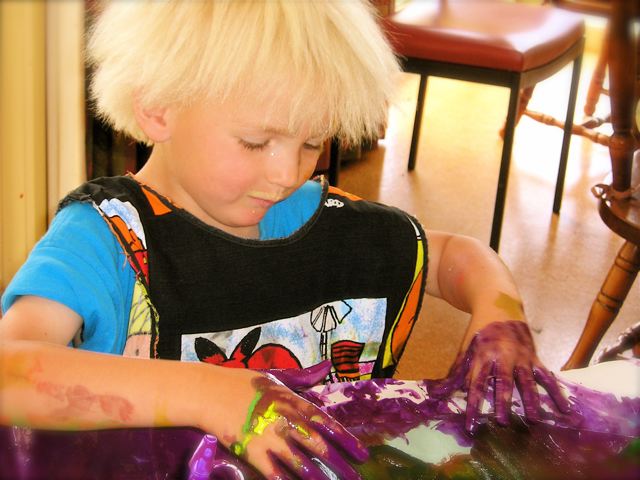
© D.M. Vernon via Wikimedia
For people who are neurodivergent, engaging in the arts can also support neural processes like filtering out background noise and things like communication. For people who have had a brain injury, engaging in the arts can help to build new neural pathways supporting cognitive recovery. Engaging in the arts, because it is this whole brain workout, can also help to build something called cognitive reserve, which is the resilience of the brain against cognitive decline. We see it from other activities, things like exercise and education as well, but we also see it from the arts. In the epidemiological studies that have been undertaken, we have also seen that arts engagement consistently across the life course is related to a lower odds of developing dementia and a longer time until dementia occurs — more preventative examples of the benefits of the arts for our health.
Treating neurological conditions
For people who have Alzheimer's, music is processed in a part of the brain that is affected later on in the disease. We see examples of people who can still remember music, even when they have forgotten loved ones in their lives. Those musical memories can be a gateway to unlocking other memories that people might have forgotten. The arts can also support people with dementia by providing environments that help reduce anxiety and distress, thereby reducing behavioral agitation. They can also improve quality of life. There are some really amazing examples now of programs like Dementia Villages that take account of visual arts, music and architecture to try and improve that quality of life for people and also help reduce the need for sedatives, incontinence materials and anti-anxiety medication.
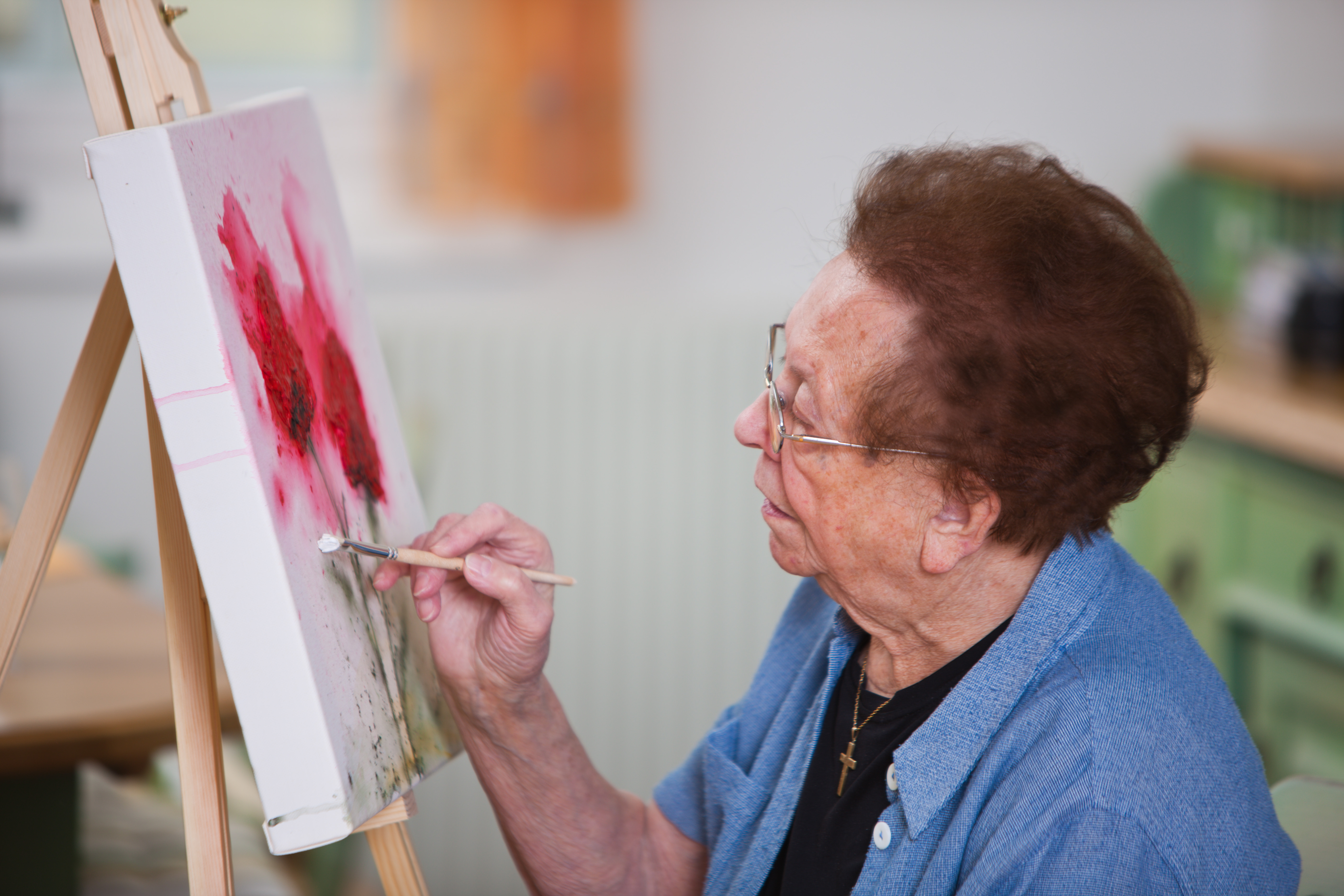 © Lisa-S via Shutterstock
© Lisa-S via Shutterstock
One of the other powerful things that the arts do is they can provide rhythm and beat, and this is something that we can train to synchronize our movements to. This can be really powerful if we are just exercising and want to increase and improve our running speed, for example, but it can also be something for people who have experienced a brain injury or have a neurological condition. For people who have had a stroke, just listening to music while they are trying to walk can help to improve their gait, make their balance better and improve the speed and fluency of their movements. For people who have Parkinson's disease, music combined with dance provides that opportunity for synchronization, entrainment, as well as providing physical movements that can help them to maintain motor function for longer.
Improving patient experience
Within hospitals, we see really critical roles that the arts can play in terms of enhancing patient experience and supporting staff well-being but also directly helping to reduce anxiety and stress. Dozens of meta-analyses show that people who listen to music prior to receiving surgery have lower levels of stress and anxiety. This can include things like lower heart rate — sometimes reduced blood pressure as well. It can mean that they have a lower need for anti-anxiety medications. In fact, trials comparing music with anti-anxiety medication prior to surgery often show that the music has been more effective than the medication.
 © Midiman via Wikimedia
© Midiman via Wikimedia
Music can also help to reduce the need for sedatives, and it can reduce pain after surgery so that people who have visual art and music when they are recovering actually have a lower need for opioids. This is so valuable, because it can reduce the amount of side effects people might experience from medication. It can really reduce the potential dependency that might develop, and often does develop, for people who have to have high levels of opioids after operations. It can also reduce critical healthcare costs.
We even see these effects in neonates, premature babies who can experience lower heart rates and blood pressure and can also have improved oxygen saturation and fewer desaturations while they are in intensive care. In fact, premature babies feed better when they are calmer as a result of listening to music, meaning they can put weight on faster and can sometimes even leave hospital sooner.
Supporting physical health
For people with chronic illness, listening to music can be a way of helping to manage hypertension. For people who have chronic obstructive pulmonary disease and other kinds of lung conditions, singing can help to reduce perceptions of breathlessness. For people who have cardiovascular conditions, dance can be even more effective than exercise in reducing levels of cholesterol.
Staying active in the arts, like going regularly to cultural events within the community, is a really effective way of staying physically active. It reduces the risk of developing chronic pain in later life and helps to reduce the risk of developing frailty as well.
Arts engagement can even help to improve the functioning of the immune system and is related to slower biological aging.
 © Jesús Moreno via Wikimedia
© Jesús Moreno via Wikimedia
Behaviorally, engaging in the arts helps to increase our motivation, our self-confidence and our sense of agency, so that people who are regularly arts-engaged tend to experience spillover effects; they engage more in other health behaviors, too, like eating more fruits and vegetables, engaging in physical activity and reducing the risk of engaging in antisocial behaviors, or behaviors that might do them harm. The arts also help to connect us so we feel less lonely and have stronger support networks. It is probably no surprise that, overall, we see clear associations between greater arts engagement and increased longevity, even when we have taken account of all of those other factors that can help to explain that relationship.
Current engagement and inequities
 © Kunokuno via Wikimedia
© Kunokuno via Wikimedia
Since 1948, the United Nations has declared that everybody has the right to participate in the arts. Unfortunately, that is not what is actually happening all around the world. If we look, for example, in the US, and you ask the average person in the street, did you engage in the arts yesterday? Only one in 20 would say yes. That is substantially lower than the levels of other health behaviors, such as engaging in physical activity or eating fruits and vegetables. If we ask adolescents whether they are engaging in the arts as part of school in any capacity, we actually find that in European countries, it is only around one in three who will say yes. If we look all around the world, we consistently see that people who are more affluent, who have higher levels of education, engage in the arts more. This is a major inequality in terms of access, and it could well be having health ramifications.
Equity of engagement
The same socioeconomic factors that predict arts engagement are the same ones that predict mental and physical health outcomes for people. As a result, it is a really important challenge for us to think, how can we increase equity of engagement in the arts? People used to argue and say that it was to do with individual interest.
 © Caleb Williams via Unsplash
© Caleb Williams via Unsplash
Maybe someone is not interested in engaging, but major advances in behavioral science, understanding why and how people engage in the arts, are a lot more complex than that. There can be individual factors, but our motivations to engage are often influenced by things like whether our parents engaged with us when we were younger, whether we were told that this was an important thing for us to consider in our day-to-day lives — and those are modifiable factors that are not just down to us as individuals alone. They have to do with the context, the societies and communities that we live in. In order to engage in the arts, we often need to have some kind of cultural norm to engage and people that we can look to to follow their examples. We also often need tangible things like buildings, arts venues and sometimes art supplies. We can need things like education to engage in the arts so that we learn the skills for how to do different arts activities. This can be really reliant on things like public funding, politics, and it can even be driven by things like social movements, influences, what the people we look up to are doing. As a result, if we actually want to change people's engagement in the arts and try and increase that, just like we would be trying to increase other health behaviors, we have to be thinking really seriously, what are all of these different barriers, and how can we have coordinated efforts that will help to break these down?
Encouraging greater engagement
There are really wonderful examples of this happening around the world. For example, in Japan, there has been a scheme whereby 1% of every major capital build has to be spent on the arts, to ensure that architecture, design and artistic spaces are interwoven within public spaces. There are other examples — KulturPass in Germany — that provide free opportunities for young people to be able to engage, ensuring that finance is not a barrier to that engagement. The Sing-Up program in the UK that ran for several years succeeded in getting singing into 96% of all primary schools in the UK, to make sure that all young people had that early chance in life to engage with music and learn those skills for the future.
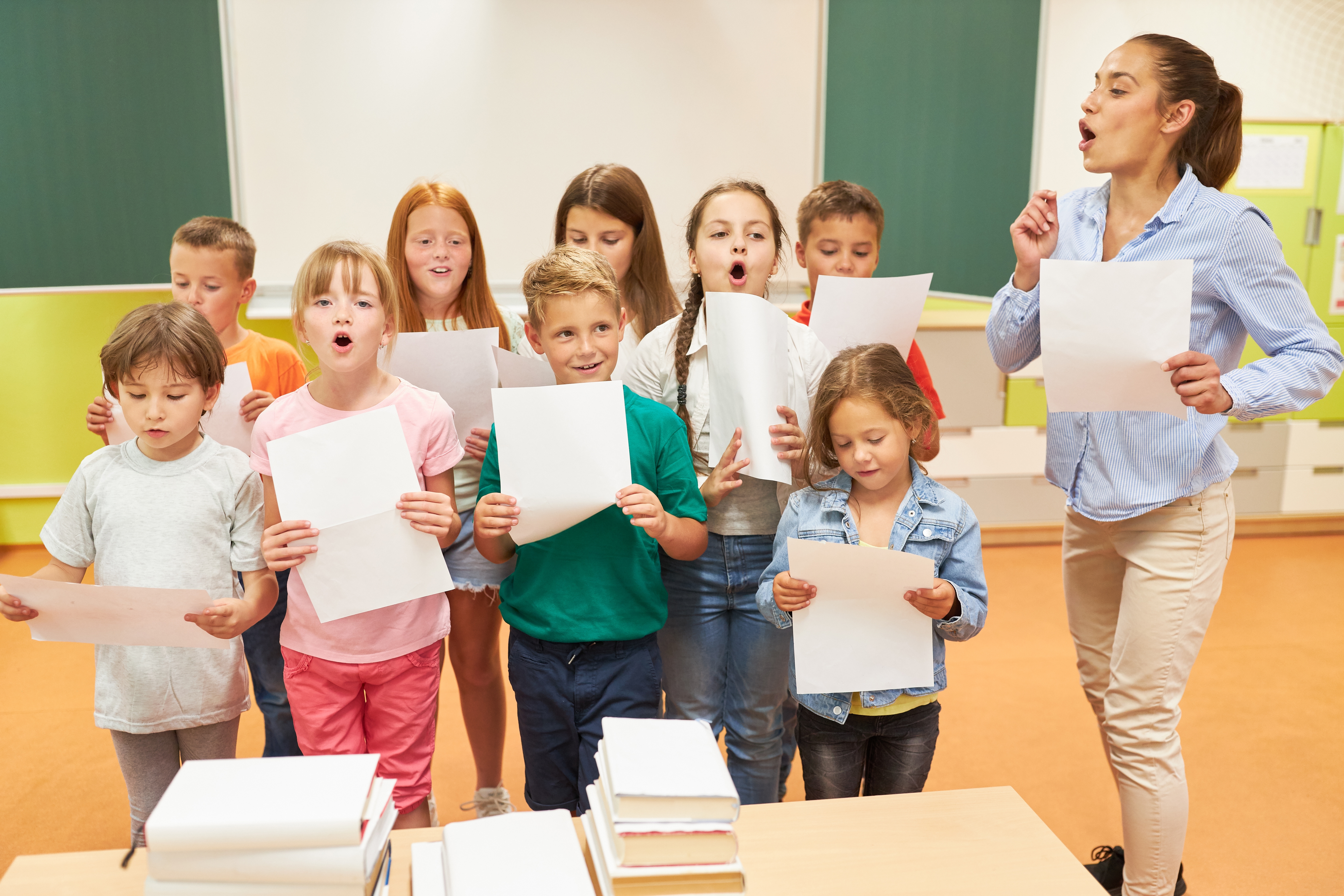 © Robert Kneschke via Shutterstock
© Robert Kneschke via Shutterstock
We as societies can also be thinking about how we value artists, ensuring that there are training programs for arts, that there are opportunities within higher education for people to learn how to develop and deliver artistic skills. We can also be thinking about the precarity that artists often have to face, often with zero-hours contracts, without the stability that can be the circumstance they need to engage in arts. If we do not have artists, we do not have opportunities within the community for us all to engage in the arts.
All around the world, we are seeing so many incredible examples now of arts programs being integrated into healthcare. Some of these examples are directly within communities, simply supporting more arts opportunities for people to engage as part of day-to-day leisure — this health behavior that might prevent them needing healthcare in the first place. Other examples are pathways within public health, things like social prescribing, arts and prescription, that are helping to connect people to arts programs. Some of these can be quite bespoke, things like dance for Parkinson's programs, which now run in over 300 communities around the world. Then there are also incredible examples of arts being directly embedded into clinical care: creative arts therapists who work within hospitals, for example, to support very specific needs of different patient groups; magic programs for children who have hemiplegia as a way of supporting hand function; and singing programs for people who have dementia to try and assist with memory and quality of life.
A societal movement
The idea about arts and health can still sometimes sound a bit fluffy, something that can be a bit contentious. Does it really have that great an impact? It is really interesting; if you look back over the last few decades, there are major health behaviors that we now all tend to accept: the idea that exercise and diet, for example, are good for our health. Just a few decades ago, there were major debates about this going on, people arguing that maybe they were not that important for health at all. All these times there were these what I call "seatbelt moments" — these moments when suddenly the evidence base became strong enough, and the voices of scientists and people working in the space became loud enough, that people actually realized this is important. We then started to see major shifts in people's behaviors as a result. I think we are really getting toward that tipping point when we are thinking about art as a health behavior.
 © James-Alex Matthews on behalf of Infers-group via Wikimedia
© James-Alex Matthews on behalf of Infers-group via Wikimedia
The World Health Organization is now heavily invested in this space. We are seeing increasing international policy recommendations coming out about the need to fund the arts as a way of supporting population health. Hopefully, in the next few years, we will get to that same tipping point, that seatbelt moment, that means that everybody suddenly becomes aware that as well as exercising, as well as eating healthily and getting good sleep, they should also all be engaging in the arts.
Hopes for Art Cure
My new book, "Art Cure", looks at the science of how the arts can transform our health, considering the role that they have in supporting people with illness, mental and physical, as well as helping to prevent us developing mental and physical health problems in the first place. I take us on a tour thinking about the mind, the brain, the body and behavior.
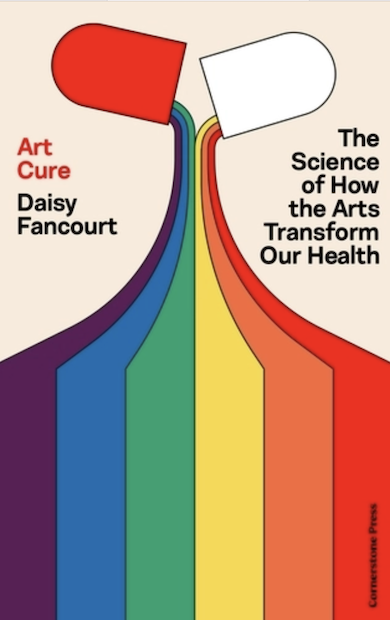
© Cornerstone Press
My whole ethos with this book is that if you ask the average person on the street about what they know about the health benefits of the arts, it tends not to be something they have ever even heard of before. If you ask them about the importance of diet or physical activity, everyone now has an awareness that these things are fundamental health behaviors. The evidence on the arts is really strong. The arts are really important for us to be doing for our health, and I want to make sure that everyone is aware of that science — aware of what they could be doing day to day, using the arts as a way of improving their own health outcomes.
Editor’s note: This article has been faithfully transcribed from the original interview filmed with the author, and carefully edited and proofread. Edit date: 2025
Discover more about
the arts’ benefits for health
Fancourt, D. (2026). Art Cure: The science of how the arts transform our health. Cornerstone Press.
Fancourt, D. (2017). Arts in health: Designing and researching interventions. Oxford University Press.
Fancourt, D., Aughterson, H., Finn, S., Walker, E. & Steptoe, A. (2021).How leisure activities affect health: A narrative review and multi-level theoretical framework of mechanisms of action. The Lancet Psychiatry, 8(4), 329–339.
Fancourt, D. & Finn, S. (2019). What is the evidence on the role of the arts in improving health and well-being? A scoping review. World Health Organization Regional Office for Europe.
Fancourt, D. & Steptoe, A. (2019). The art of life and death: 14-year follow-up analyses of associations between arts engagement and mortality in the English Longitudinal Study of Ageing. BMJ, 367, l6377.
Fancourt, D., Steptoe, A. & Cadar, D. (2018). Cultural engagement and cognitive reserve: Museum attendance and dementia incidence over a 10-year period. The British Journal of Psychiatry, 213(5), 661–663.
Fancourt, D., Ockelford, A. & Belai, A. (2014). The psychoneuroimmunological effects of music: A systematic review and a new model. Brain, Behavior, and Immunity, 36, 15–26.